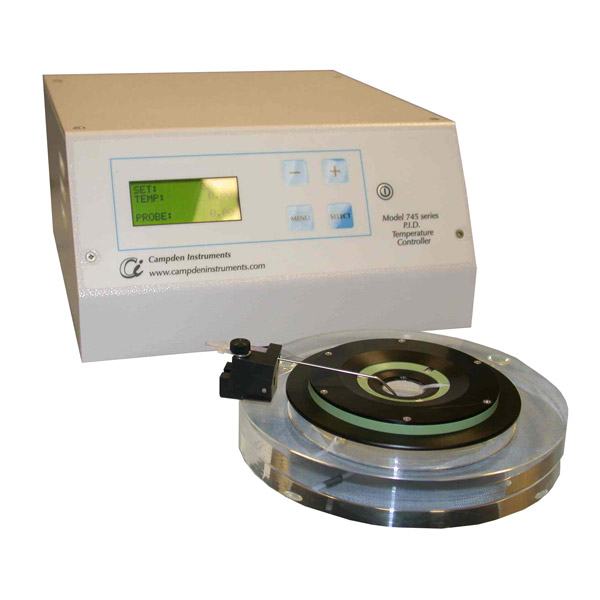
The 7800 Visual Patching and Imaging Chamber consists of an aluminium heat exchanger plate heated by a thin heating element. The heat exchanger supplies concentric heat to the chamber itself and in-line heat to the incoming perfusate ensuring both are heated uniformly. A thermistor embedded in the plate gives temperature feedback to the control system. In its upper surface the plate has a series of annular grooves to carry up to four perfusate tubes. The perfusate tubes carry perfusate to the central chamber at very low level encouraging laminar flow across the chamber.
A gas inlet port allows gas to be introduced for hypoxia studies. Gas flows around the grooves and is heated, eventually exhausting into the central chamber through radial grooves. The heat exchanger plate is coated on all surfaces with p.t.f.e. to discourage drug adhesion. Considerable attention in the design stage has resulted in a chamber with a very low profile reducing the likelihood of the unit interfering with the objective lens and instrumentation probes, electrodes, etc. Because the unit is very compact, the heater output has been closely balanced to the thermal mass of the heat exchanger and the likely demands of perfusate / gas flow. The unit should therefore be protected as much as possible from outside influences such as cold draughts, open doors and windows that may cause unexpected and unwanted variations in temperature.
The temperature controller using PID (Proportional Integral Derivative) algorithms allows close control of the perfusate temperature to within +/- 0.1° C. A second temperature feedback probe can be placed in the central chamber and connected to the controller allowing both chamber temperature and temperature offset (between perfusate and chamber) to be established. The controller has analogue data output capabilities. All power outputs from the controller are DC ensuring that there are no electromagnetic noise emissions to interfere with other instrumentation.
A unique design of suction capillary tube ensures a steady flow of waste perfusate from the centre chamber whilst maintaining a smooth, constant level of perfusate in the centre chamber. The suction tube is adjustable for perfusate depth and has a low profile to avoid interference with other instrumentation probes.
The heat exchanger plate is designed to accept a 22mm slip carrier (along with a vented, double glazed cover if required for hypoxia studies) or a 35mm Petri type dish. Additional slip carriers and chambers to special designs are available on request.
The heat exchanger is mounted on the microscope stage via an insulating adapter ring. The adapter ring has location diameters of 108mm and 110mm making the unit suitable for the majority of upright and inverted microscopes. Other adapter rings to suit a particular microscope can be supplied on request.